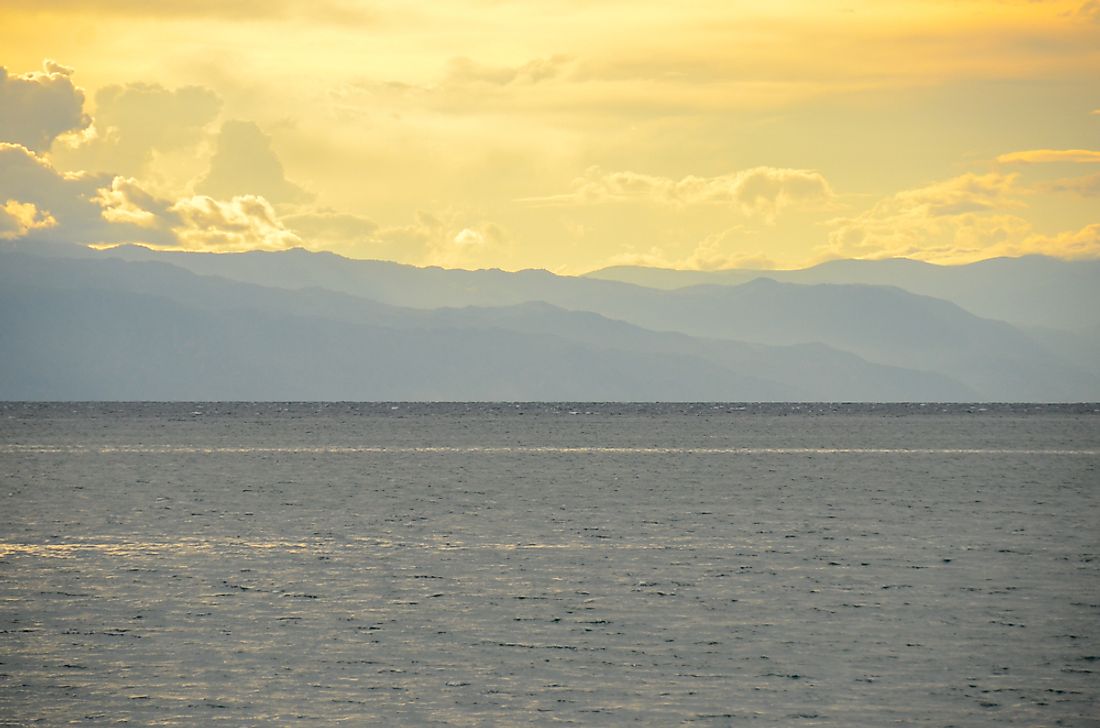The Largest Lakes in the World by Volume

A lake is defined as an area filled with water and surrounded by land, except for any inlets or outlets such as a river or stream. There are 11 major types of lakes that can be classified according to their formation and other characteristics. Lakes can also be ranked by volume or surface area. While a lake's surface area is relatively constant, its volume may change several times during the year. Therefore, since the volume of a lake changes, estimates of its volume can vary depending on the source and time of measurement. Some of the largest lakes in the world by volume are highlighted below.
The Four Largest Lakes by Volume
Caspian Sea
The Caspian Sea has been classified as both a lake and a sea. However, it is the largest inland body of water in the world, and can be classified as the world’s largest lake in terms of both surface area and volume. The Caspian Sea is located between Asia and Europe, and covers an area of approximately 371,000 km2. It has an average volume of 78,200 km3, accounting for about 40% of the world’s lacustrine waters. The lake is fed by more than 130 rivers, the largest being the Volta River. The volume of water in the Caspian Sea is almost 3.5 times more than all five of the Great Lakes of North America combined.
Lake Baikal
Lake Baikal is situated in southern Siberia and is the world’s largest freshwater lake, accounting for about 22% of all fresh surface water in the world. With a volume of 23,615.39 km3, it is the world’s second-largest lake by volume. Lake Baikal is also the deepest lake in the world, with a maximum depth of 1,642 m. In terms of surface area, it ranks as the seventh-largest in the world, covering an area of approximately 31,722 km2.
Lake Tanganyika
Lake Tanganyika is a freshwater lake with a volume of 18,900 km3, ranking as the second-largest freshwater lake in the world by volume, after Lake Baikal. It is one of the African Great Lakes and is located within four countries, namely Zambia, Burundi, the Democratic Republic of the Congo (DRC), and Tanzania. Lake Tanganyika is also the second oldest and the second deepest lake in the world. The lake is drained by the Congo River system and ultimately empties into the Atlantic Ocean.
Lake Superior
Although Lake Superior is the second largest lake in the world by surface area, it is the fourth-largest by volume, with a volume of 12,000 km3. The lake is shared by the United States (US) and Canada and is one of the five Great Lakes of North America. Lake Superior drains into Lake Huron via the St. Mary's River. The lake is fed by more than 200 rivers, the largest of which include the Nipigon River, Pic River, Pigeon River, and the St. Louis River.
Causes of Change in Lake Volume
The volume of most lakes around the world varies throughout the year and changes over time. One factor responsible for changes in volume is the season. During the dry season, some of the rivers or streams that feed a lake dry up, resulting in less water entering the lake, causing a net decrease in volume. However, during the rainy season, the number of rivers that drain into a lake increases, as well as the amount of rainwater that enters the lake, resulting in a volume increase. Other factors that affect a lake's volume include evaporation, diversion of rivers that feed the lake, increased water usage, and decreased depth.
List of the 10 Largest Lakes in the World by Volume
| Rank | Lake | Water Volume (km3) |
|---|---|---|
| 1 | Caspian Sea | 78,200 |
| 2 | Baikal | 23,600 |
| 3 | Tanganyika | 18,900 |
| 4 | Superior | 11,600 |
| 5 | Malawi | 7,725 |
| 6 | Vostok | 5,400 |
| 7 | Michigan | 4,920 |
| 8 | Huron | 3,540 |
| 9 | Victoria | 2,700 |
| 10 | Great Bear Lake | 2,236 |











